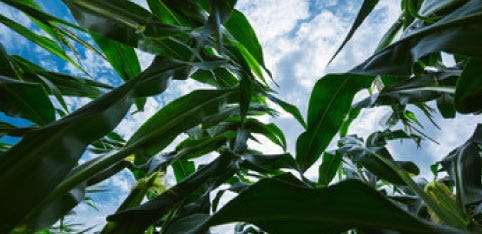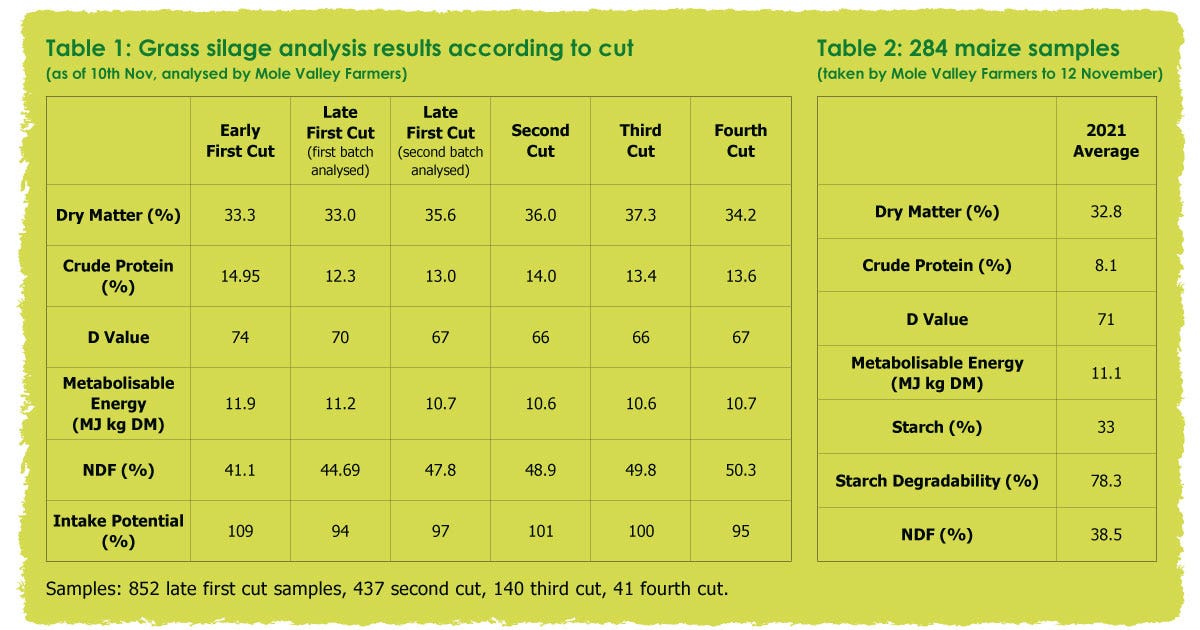
Grass & maize combination creates winter ration challenges
A combination of dry, high fibre grass and maize silages with lower starch degradability means finding ways to boost palatability and throughput will be vital this winter to optimise milk production.
Dr Robin Hawkey, Senior Nutritionist for Mole Valley Feed Solutions, said although average protein levels in later cut grass silage improved as more samples came in, the silage was still relatively low in protein and high dry matter (see Table 1). This has been reflected in milk production.
Dr Hawkey said: “Cows aren’t milking as well as expected. Milk fat and proteins are flying and fertility and body condition seem excellent, but I think we’re a couple of litres light per cow because of this low milk potential silage.
“Where you’d usually expect first cut to be the best cut of the season and subsequent cuts to decline in quality, analysis shows that second, third and fourth cuts are actually fairly similar to later first cuts, although proteins have recovered slightly.”


The fact all cuts are, on average, higher dry matter and higher in NDF will create challenges with intakes and rumen throughput, which are essential for production.
“At the same time, early indications suggest this year’s maize silages are relatively dry and, although the starch is quite high at 33%, starch degradability is lower than the previous couple of years,” he added.
“This will improve the longer the crop is in the clamp, but those farmers who are forced to feed it immediately in combination with dry grass silage, may struggle with dry rations and undegraded starch grain coming through in the dung.” (see Table 2).
Dr Hawkey said there were three steps farmers could take to help address the challenges:
1. Adding water to the diet
Ideally the diet should be around 45-47% dry matter. However high dry matter grass and maize silages are pushing this in excess of 50% on some farms. To achieve the target dry matter, some farmers are adding water to the diet and seeing good results. “In some cases, almost every litre put into the mixer wagon is coming back in the bulk tank,” Dr Hawkey said. Depending on the base ration, this could mean adding 4-6 litres of water per cow.
2. Adding yeast to the ration
Adding X1 live yeast to the diet can help rumen metabolism and fibre digestion, and in turn, starch digestion thanks to better rumen function. This could encourage rumen throughput. “The mode of action of live yeast is well documented and numerous trials have reported benefits,” added Dr Hawkey.
3. Supplying plenty of rumen degradable protein
More rumen degradable protein may be needed to make up for low protein forages. “This rumen degradable protein is needed to get the rumen bugs firing,” Dr Hawkey explains. “Feed grade urea could be fed, however it’s much less available now due to the drop in global gas production. We can however incorporate urea into compounds and blends.”
Other rumen degradable protein sources to consider include soya, rapeseed, glutens and distillers’ products. At the time of writinga soya is better value than rape per unit of protein, however rape delivers good levels of protein.
Dr Hawkey recommends feeding a mix of rape and soya to provide the right balance of rumen degradable energy and protein.


For advice on ration balance this winter, call The Feed and Nutritionists Line on 01278 444829









